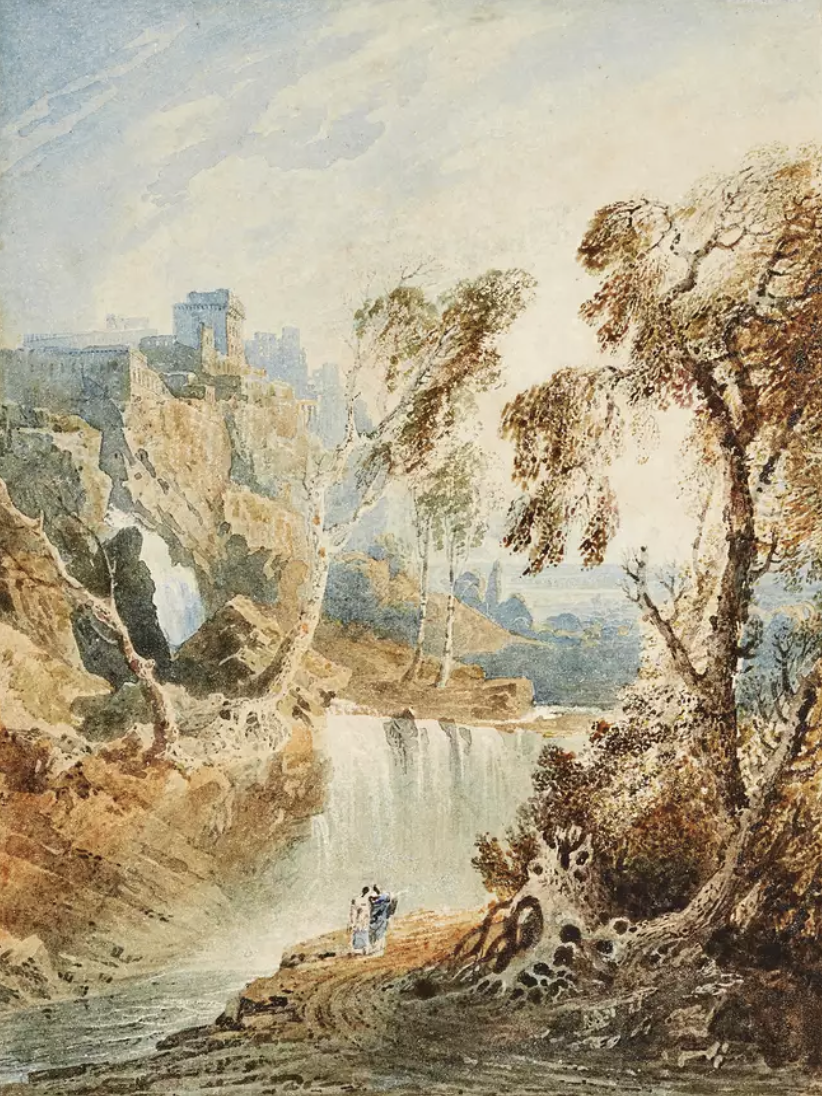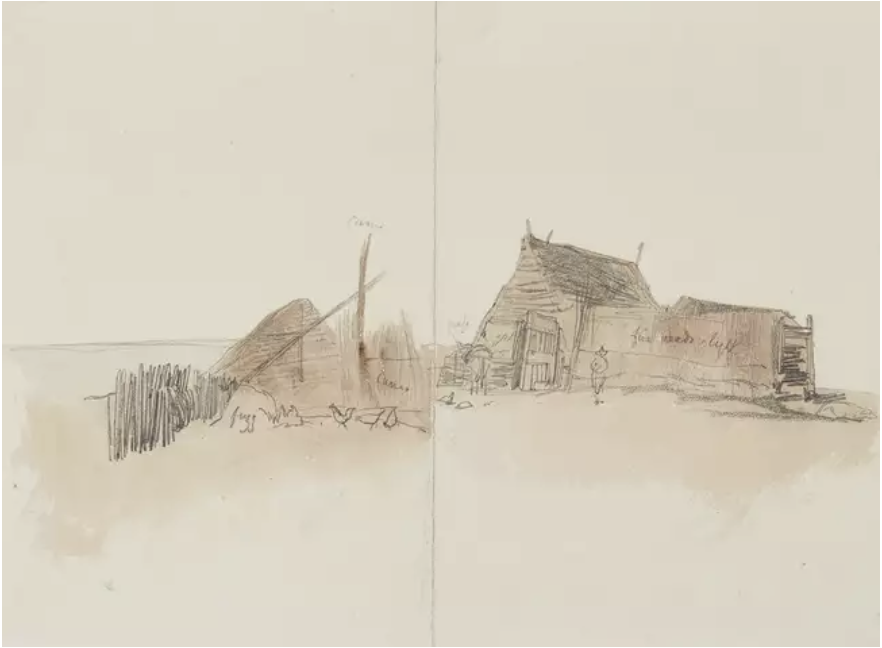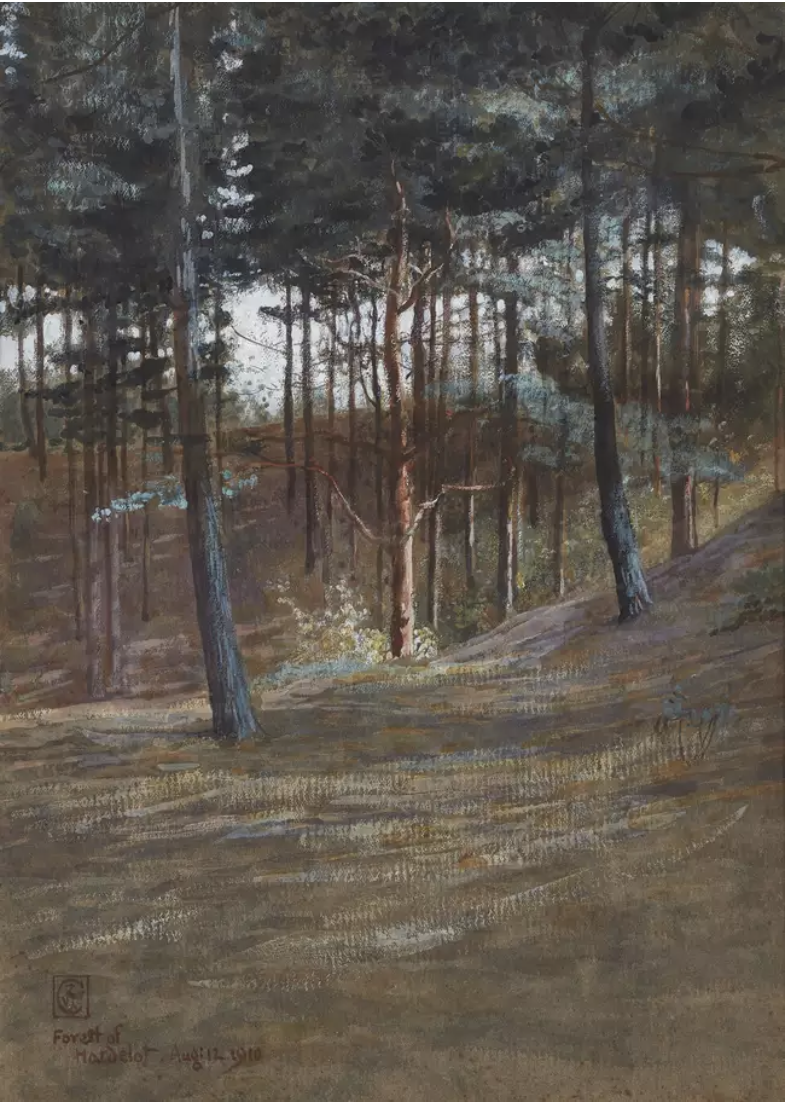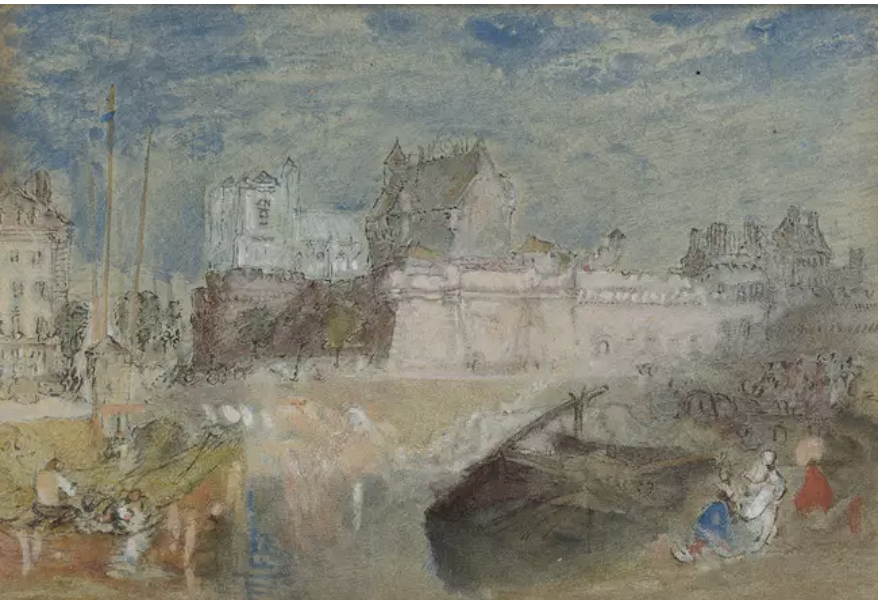In addition to a wonderful selection of oils, this month’s Old Master, British & European Pictures Sale features many works on paper, including various fine watercolours by important British artists of the 19th century.
While the technique of painting with water-soluble paints is very old, and has been used in Britain at least since Medieval monks brightened their manuscript illuminations with delicate water-based colours, the medium gained great popularity during the 18th and 19th centuries, when technological advances encouraged artists to explore it to the fullest.
One such important development was the commercial availability of small, hard cakes of water-soluble pigments which were easily available as well as portable, and therefore well-suited to the fashionable pursuit of sketching outdoors. Another important technological advancement was the advent of ‘wove’ paper, which had a more uniform texture than its earlier counterparts and allowed artists to use watercolours with greater precision.
Our next auction includes several brilliant works from this Golden Age of watercolour painting, which offer a great opportunity to purchase works by well-known artists at more accessible price points. Here, Head of Sale and Specialist Charlotte Russell shares her top tips on buying watercolours at auction.
CONDITION IS KEY
Watercolour is a delicate medium, and while the delicacy and subtlety of watercolours is part of what makes them very beautiful, this also makes them quite fragile and prone to fading.
Look out for strong, well-preserved colours when buying watercolours at auction. Lot 192 in the November sale, an atmospheric, Grand Tour-inspired landscape by John Martin, has beautifully vibrant blues and greens.
Lot 192: John Martin, Figures by a waterfall,
Furthermore, I would recommend keeping any works in your collection out of direct sunlight and framing them with acid-free paper backboards and mounts in order to preserve their beautiful colours and keep the paper from browning.
KEEPING IT PERSONAL
One of my favourite things about watercolours is how personal they can be. Unlike more formal oils, which very often were fully or partially painted in studios, artists often executed their watercolours in sketchbooks or on the go. Sometimes the artist’s thought process is quite clearly indicated and I always think it’s worth looking out for works that show this closeness to the maker. Lot 180 in the auction, a charming rendition of a farmstead by the illustrator and travel artist Edward Lear, shows pencil annotations by the artist, which to me really sets it apart.
Lot 180: Edward Lear, A Farmstead
POINTS FOR PROVENANCE
Because so many watercolours come from more ephemeral sources such as artists’ sketchbooks they can be quite hard to pin down, and, like with oil paintings, something that can add to the value is a little history.
This watercolour by Walter Crane (lot 331), which shows a forest in Northern France, is known to have been exhibited as early as 1912, which is such an interesting detail.
Lot 331: Walter Crane, RWS, A Bit in Hardelot Forest
Another watercolour with some possibly quite interesting provenance is lot 197 in the sale. This watercolour by William Ward, which reproduces a composition by J. M. W. Turner, is thought to have at one point been in the possession of the art critic John Ruskin, whose handwriting is on the back.
Lot 197: William Ward, Château and Cathedral at Nantes,
after Joseph Mallord William Turner, RA








